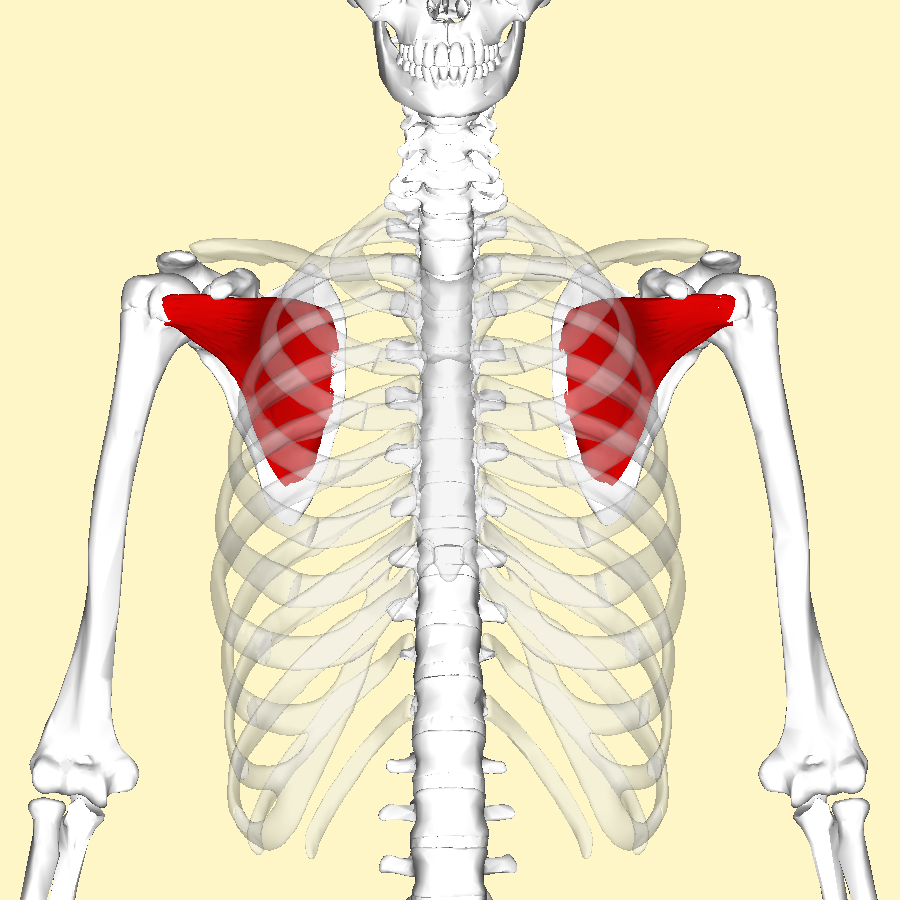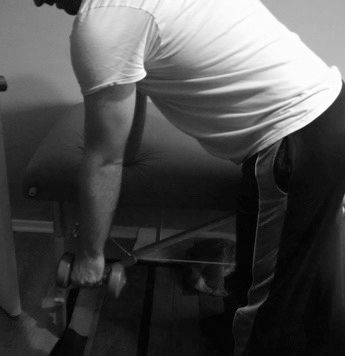"The Cold Shoulder" - Your Guide To Frozen Shoulder
- Chris Hall

- Jan 29, 2022
- 3 min read
I hope you all have been surviving the humidity of the summer!! It's been really hard not to melt out there! In the spirit of the season, I wanted to draw your attention away from the heat so I wanted to describe the condition Frozen Shoulder, and what can be done to help you heal.
Frozen Shoulder is essentially a painful restriction of range of motion in the shoulder. As the tissues heal, they become tight which causes the inflexibility. As a result, to complete daily activities other areas tend to become tender as they are not used to being active.

The most common cause of Frozen Shoulder is a trigger point (muscle knot) in the subscapularis muscle (see image). This muscle is a part of your rotator cuff which lies between the ribs and scapula. It is usually brought on by trauma to the soft tissues, postural dysfunction when the scapula is rounded forward (protraction), disuse of the shoulder muscles after an injury and certain diseases.
During Frozen Shoulder, the tissues go through three phases:
Freezing Phase - there is a gradual onset of pain, usually after minor trauma such as reaching for an object. The shoulder is usually kept stationary in attempt to protect the pain from getting worse. As it progresses, muscle spasms and tissue inflammation are present. It may be difficult to sleep when there is pressure applied to the affected shoulder as well.
Frozen Phase - this phase usually bleeds into the Freezing Phase. The pain begins to diminish and tissues begin to stiffen. This is what causes the loss of range of motion and if left untreated can lead to muscle atrophy because of the disuse.
Thawing Phase - this is the final phase of Frozen Shoulder. As the pain continues to diminish, range of motion is gradually restored, although it may not be fully restored.
As the shoulder moves through the three phases when Frozen Shoulder is present, there are many things that can be done to help the tissues heal and improve the range of motion.
When it comes to massage, the main treatment is focused on releasing tension and trigger points in the subscapularis muscle while increasing mobility in the shoulder joints. In the earlier phases, there may be some swelling present. Massage can help to calm the swelling and speed up healing. During the thawing phase, the connective tissue can be released and help increase range of motion of the shoulder. Other structures that are compensating from the injury can be treated to help restore proper function.

I always educate people who are suffering from Frozen Shoulder on specific exercises to help in between treatments. Since symptoms vary from person to person depending on how the Frozen Shoulder has manifested, it is difficult to outline a general exercise plan. However the common exercise I recommend is very helpful for improving most symptoms is usually safe for everyone. It is called the Pendulum Exercise. Using a small weight (no more than 5 pounds) to help stretch the joint capsule, lean forward holding the weight in the affected shoulder. Move the shoulder through all ranges by drawing circles in both directions. Be sure to stay out of ranges that cause pain. This exercise helps to maintain and build range of motion while the shoulder heals.
If you've ever had Frozen Shoulder, you are probably familiar with symptoms and now I hope that you understand what it is and what you can do to help the tissues heal.
Thank you for taking the time to read this blog, and I hope you have a great day!
References
Rattray, F., & Ludwig, L. (2005). Clinical Massage Therapy: Understanding, Assessing And Treating Over 70 Conditions (11th ed.). Elora, ON: Talus Incorporated p. 457-274
Image: Subscapularis muscle. (n.d.). Retrieved July 08, 2016, from https://en.wikipedia.org/wiki/Subscapularis_muscle




Comments